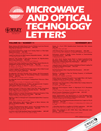Flicker noise reduction in RF CMOS mixer using differential active inductor
Abstract
This article presents a low flicker noise (1/f), double-balanced Gilbert-cell mixer. As the down converted base-band signal is strongly affected by the low-frequency flicker noise, resulting in mixer signal-noise ratio (SNR) degradation, a dynamic current injection technique has been used to reduce the flicker noise corner frequency. Differential active inductor has been used to tune the tail capacitance at the node between the local oscillator (LO) switches and the radio frequency (RF) transconductance stages, resulting in reduction of RF leakage. RF and LO leakage has been minimized by adding an on-chip low-pass filter to the mixer output. The mixer has been designed and fabricated using Taiwan Semiconductor Manufacture Company (TSMC) 0.18-μm 1P6M complementary metal-oxide-semiconductor FET (CMOS) process. The performance of the fully integrated mixer is given. With RF of 2.4 GHz, intermediate frequency of 10 MHz and LO power of −5 dBm, conversion gain of 12 dB, input third order intercept point (IIP3) of −5.5 dBm, and single-side band noise (SSB-NF) figure of 15 dB with flicker noise corner frequency of 300 KHz had been measured. The mixer consumes 19.8 mW from 1.8 V supply. © 2011 Wiley Periodicals, Inc. Microwave Opt Technol Lett 53:2553–2556, 2011; View this article online at wileyonlinelibrary.com. DOI 10.1002/mop.26366




